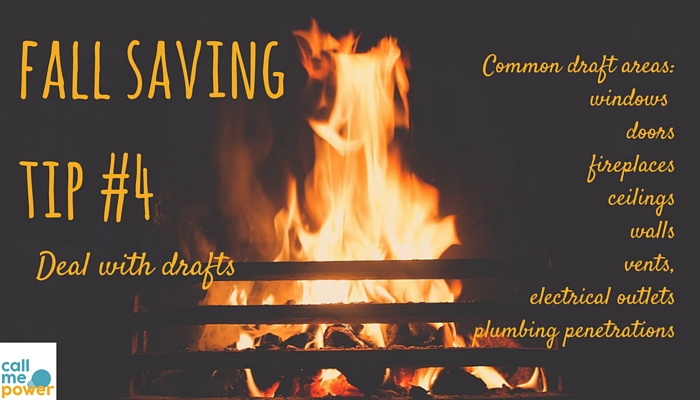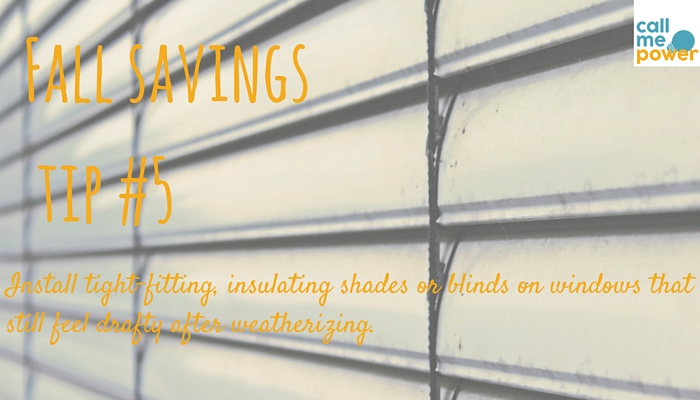Six Ways to Save on Fall Energy Costs
As the temperatures start to drop and summer fades away, it's time to start thinking about getting prepared for the winter. Take advantage of the changing seasons to make a few changes to reduce your energy costs and save money with these tips. Some of these are free, others require a little bit of an up-front investment, but no matter what, they're guaranteed to help you save!
Ways to Save Money... For Free!
Temperature Control

Set your thermostat to no higher than 68 degrees when you’re at home, and make sure to lower the setting when you go to bed or leave the house. You'll save about 2 percent on your heating bill for every degree you lower the thermostat.
Stay Out of Hot Water

According to the US Department of Energy, water heating accounts for about 18% of the energy consumed in your home. Set your water heater to 120 degrees - not only will you save energy, but you'll also avoid scalding your hands! Think about using cold water settings for household tasks like laundry or even running the dishwasher - cleaning can be just as effective as hot water.
Shop Around for a Better Rate

If you have energy choice in your state, you can take control of your bills by choosing a plan for your energy. Whether for electricity or natural gas, we recommend choosing a fixed rate plan, so that you can enjoy peace of mind (from predictable bills) and lock in savings over the long term. Energy prices are often lower during the spring and the fall, so take advantage of falling prices now before they rise again during the winter.
You can shop around for rates on your state-run energy comparison sites, such as Texas Power to Choose, PA Power Switch, New York Power to Choose, Plug In Illinois, and more, or you can call us at 410-347-8789 or 832-460-0233 to speak to an energy expert who will find your personalized energy solution.
Ways to Save With Some Low-Cost Investments
Defeat the Drafts

The EPA estimates that sealing air leaks and adding insulation can save an average 15 percent on heating and cooling costs for homeowners. The most common areas for drafts are windows, doors, floors, ceilings, walls, ceilings, ducts, vents, electrical outlets, and plumbing penetrations.
You can detect air leaks by conducting a "smoke test". First, close all windows and doors in your home, turn off your furnace and/or water heater, and create a negative pressure by turning on kitchen or bathroom exhaust vents. Then hold a lit incense stick close to common draft areas (such as windows and doors), to see where the smoke moves. There's no draft if it stays fairly static, but if it is sucked towards the draft area then you know that it needs to be fixed. You can eliminate air leaks by caulking or weatherstripping.
Decorate Efficiently

Consider installing tight-fitting, insulating drapes or shades on windows that still feel drafty after weatherizing. For extra energy savings, take advantage of the heat of the sun by leaving blinds open during the day to let heat in, and keeping them closed at night to keep heat in.
Give Your Furnace Some Love

Get your heating system tuned up before you start using it, so that it's working in top condition before winter. Ask your heating system servicing technician for tips on how to operate it efficiently. Also make sure to replace or clean furnace filters regularly - some recommend changing them every month when they in constant use in the winter.